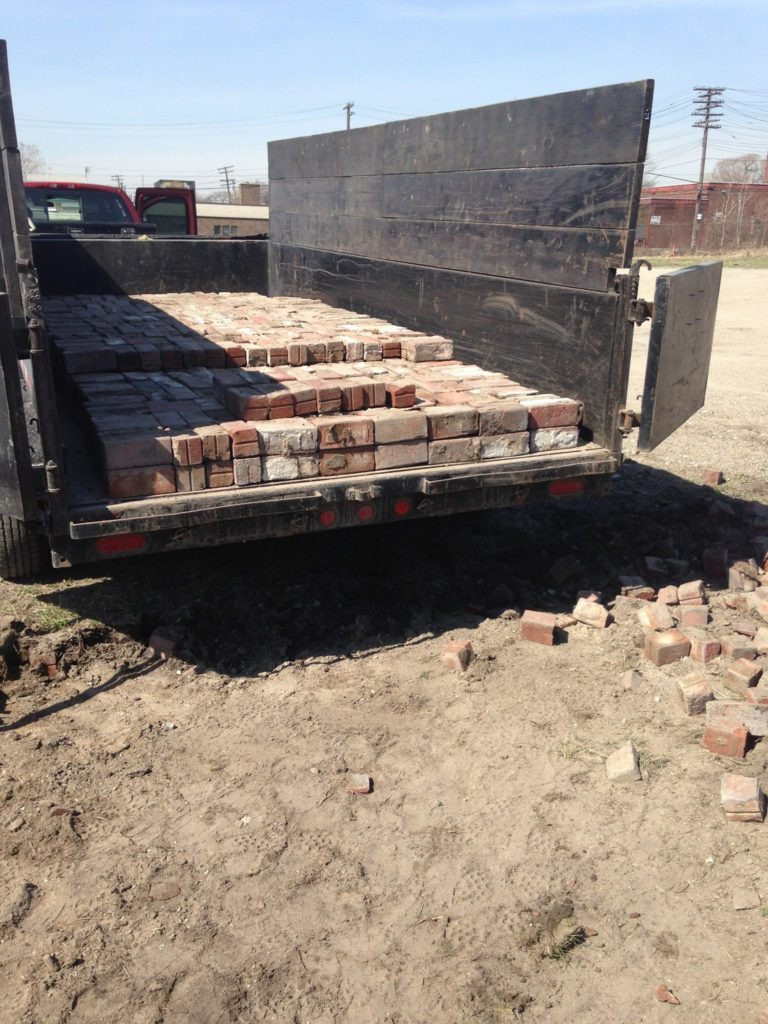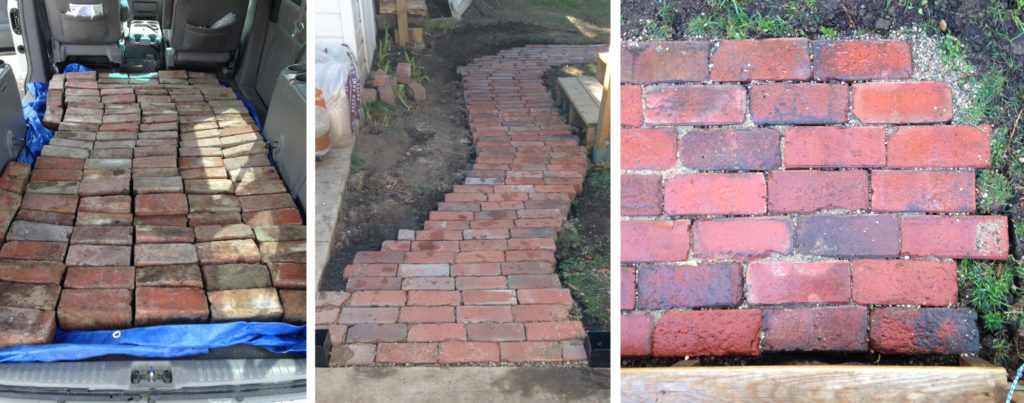
I undertake a lot of urban design + recreational infrastructure within the city of Detroit. As I wrapped up Phase 1 design for Riverside Park, a new Detroit riverfront park hugging the Ambassador Bridge to Canada, it became clear an approximately 5,000-square-foot old brick surface would not be salvaged + reused due to project constraints. In fact it was to be buried in an onsite rubble pit! I inquired with the project team about how they would feel if I could get the bricks removed, free-of-charge, ahead of construction. The unofficial response was, “We are not going to tell you no…”
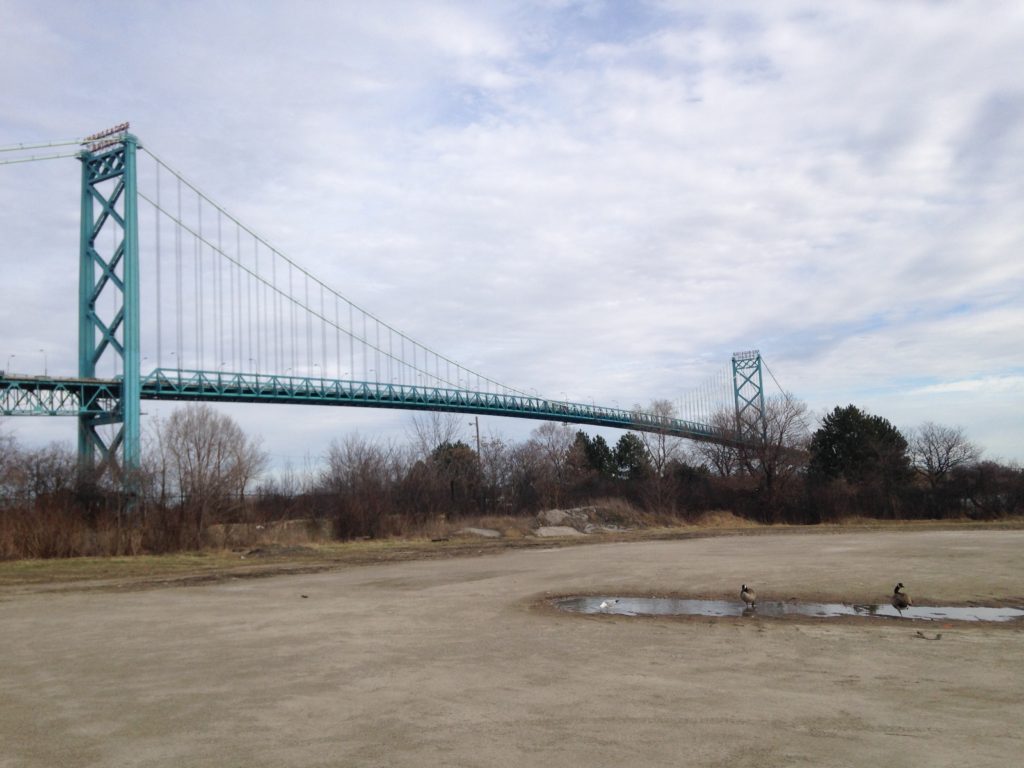
Originally a grouted brick access drive for heavy industry, industry that disappeared decades prior, these roughly 100-year-old bricks had been sitting under the bridge and sky for nearly a century. Half overgrown by weeds and grass, the grout flaked away like soft clay, and I was able to quickly pop bricks free with a basic shovel.
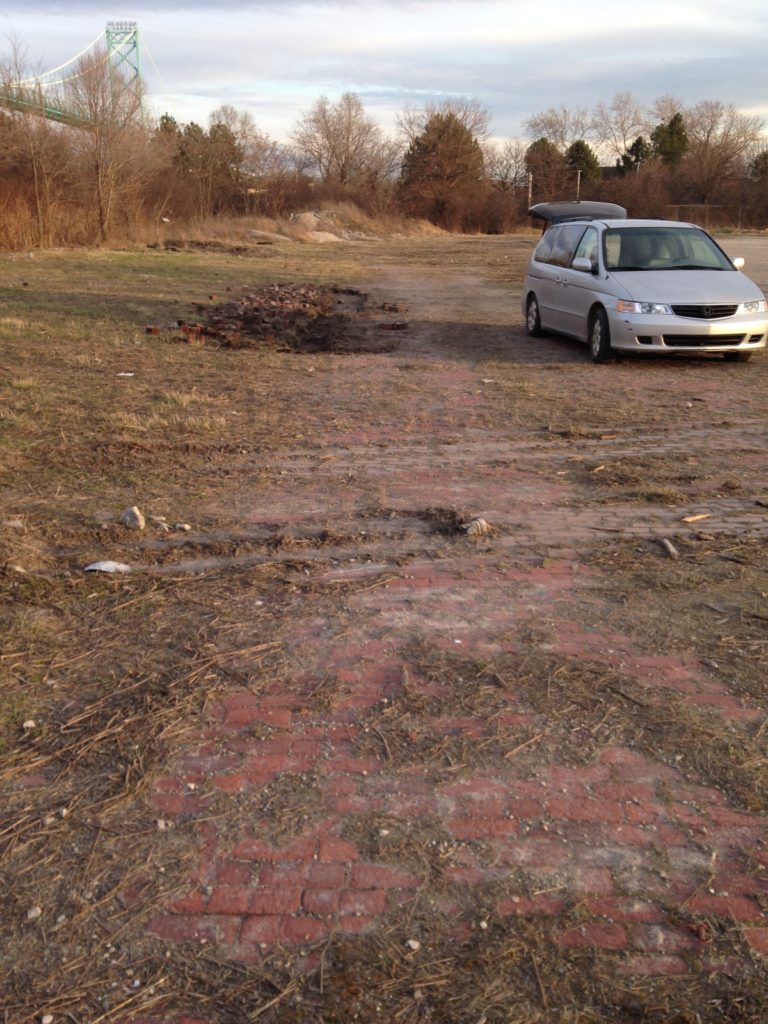
Each brick was imprinted with “LINCOLN BLOCK” on the side. Bricks were solid cast and heavy, at roughly 10 pounds each. Brick dimensions were approximately 9-inches x 5-inches and a whopping 5-inches thick.
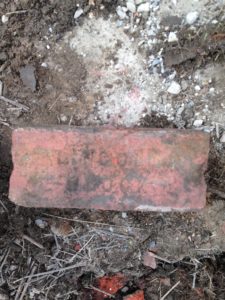

I had a vision for the brick at home, and calculated square footage generously to identify about how much brick would be required. It came to roughly 500 square feet. I was able to borrow a relative’s old van to inevitably bring back nearly 600-square-feet of reclaimed brick. I calculated the van’s safe axle capacity relative to brick quantity, and accomplished the transport in three separate trips over two days. I also posted a picture of the remaining brick, along with directions, across social media platforms in hopes they would be salvaged (more about this later).
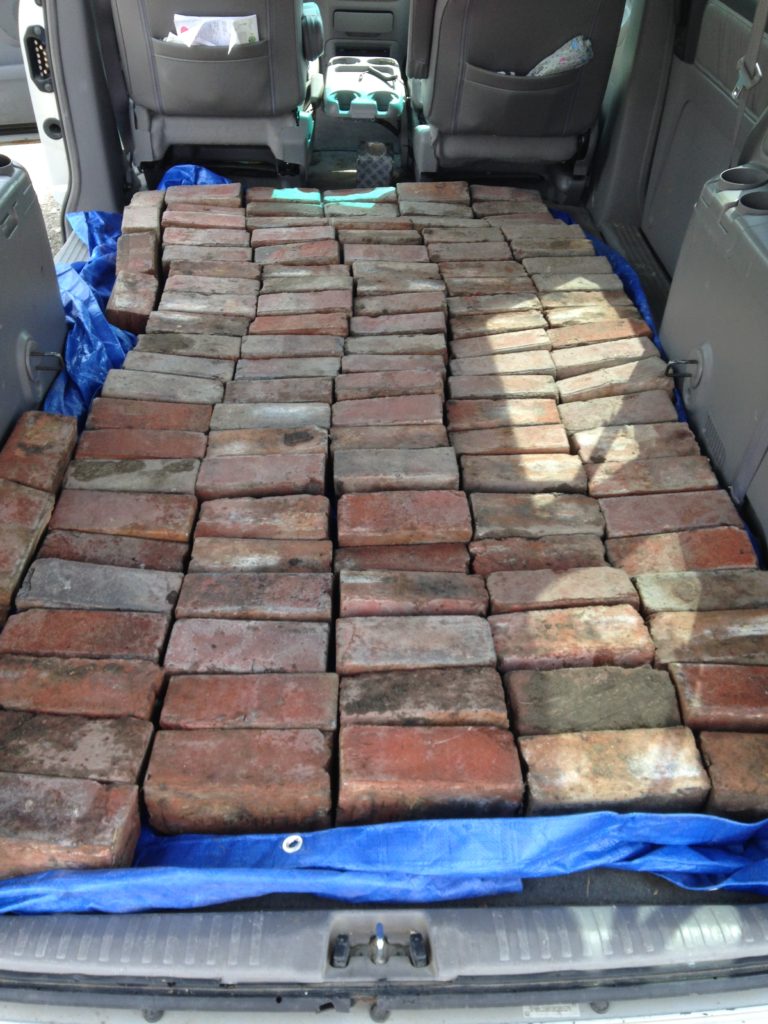
When I returned with a load of brick to my house I unloaded them in soldier rows on the driveway, then power washed each. A century’s worth of dust, dirt, and grime immediately revealed beautiful distinct hues of red weathered brick faces that had plenty of life in them (more life + character than new brick pavers in my opinion). No two bricks were alike.

For the walkway I had in mind, I staked out the rough footprint and excavated about a foot of soil away to accommodate a 6-inch compacted gravel base course, 1-inch paver sand leveling course on top of that, and then the brick itself with a half-inch reveal above finish grade.


The bricks were so thick that the path did not- and has not budged post-installation (two years at time of this edit). I covered the bricks with paver sand upon completing installation and swept in sand several times, along with rinsing the sand down into the brick joints with a hose between each application. I try to do this once or twice a year as maintenance too. The paver sand locks bricks tight and will fill any voids / pockets that might have occurred during installation. It also reduces soil and grime from creating inevitable cavities for weeds to sprout between bricks.

After posting images + coordinates on social media, I was delighted to discover a response just a week later of someone retrieving the remaining brick! A Michigan-based landscape contractor posted the image below, and said this was his last of two trips. I also received a message from the client he ended up installing this brick for as a driveway to their new home. They wrote that their grandparents emigrated to Detroit around the same time this brick would have first been installed. Evidently their grandparents arrived to Detroit via the Detroit River, and they liked to imagine it was not far from this same brick.
Thanks again, Nate!
